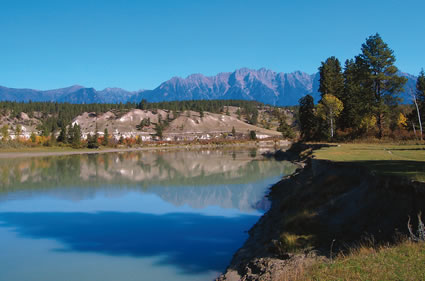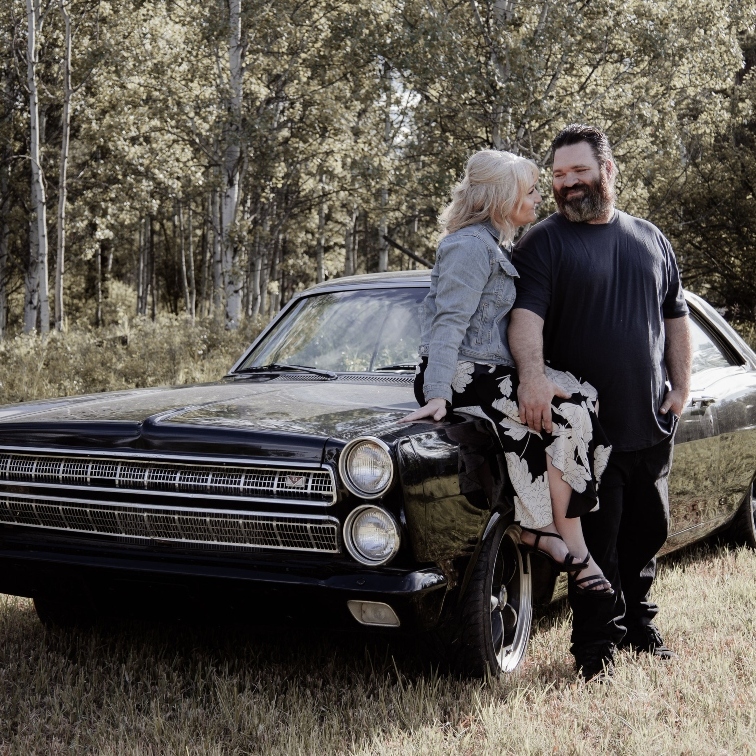Waste not, want not
Cranbrook’s updated spray irrigation facility could set the standard for waste-water treatment

— Jamie Hodge photo
When water goes down the drain or is flushed away, most of us don’t give it a second thought—until something goes wrong. However, that’s a luxury that the City of Cranbrook doesn’t have.
Cranbrook’s current waste-water system has been in place since the mid-1970s, using the best science available at the time. Sewage ponds were established at the south end of town where the effluent was treated before being pumped to storage ponds. The waste water was then further treated and used for irrigating pasture—primarily alfalfa used for cattle feed—and rangeland.
The two storage ponds at the spray irrigation site were originally designed to hold 830 metres elevation—approximately six million cubic metres. Because the average rainfall in the region is approximately 380 millimetres per year, it was estimated that this would be sufficient for the city’s needs. However, as City of Cranbrook engineer Jamie Hodge explained, in the mid ‘90s, concerns about leakage led the Ministry of Environment to recommend a significant decrease of almost 40 per cent in the storage capacity of the ponds to a maximum of 824 metres above sea level, while initially designed to operate at 830 metres elevation. In years of excess precipitation or increased sudden storm water, this would be virtually impossible.
Eventually, it became clear to the City that in order to maintain the maximum capacity, there would need to be in place a system where outflow could be released into the nearby Kootenay River, and that in order to do so meant meeting acceptable standards for water quality—a challenge with its existing system. On the other hand, a mechanical system for sewage treatment similar to what is being used in major centres—a system that Hodge called “a dinosaur”—would be expensive and inefficient. Neither the current system nor a typical mechanical system would be able to attain the necessary quality of 25 parts per million for either biological oxygen demand (BOD) or total suspended solids (TSS).
The City eventually applied for federal stimulus funding and grant money—$10 million plus another $5 million of the City's capital—that was given on the environmentally friendly aspects of the new design. Improvements have been made almost at ground zero, the City’s sewage ponds. Another storage pond at the irrigation site is being constructed, new aeration technology is being incorporated into the existing structures to speed biological breakdown, and even the irrigation technology is state of the art. Hodge estimated that pumping and energy costs could be reduced by almost 50 per cent.
“That’s a very significant savings,” he said.
Any water that will flow into the Kootenay River will be treated with an alum injection so that any remaining solid particulates cluster together and sink to the bottom where they can be removed, and then the water will receive ultraviolet treatment.
“Anything that comes to the river should be, by environmental standards 25 BOD and 25 TSS,” said Hodge. “We’ll be at 10 and 10.”
As far as Hodge is concerned, this is just the beginning. Irrigating to land is the most efficient, cost-effective and environmentally friendly way of recycling waste water, and Hodge believes Cranbrook’s new system has the potential to influence other communities to do the same.
“Personally, I would like to turn the whole facility into a centre of excellence for reclaimed water,” he said.
There have been discussions with Agriculture Canada regarding the use of the facility as a research station, since over 3,500 head of cattle are raised on the rangeland irrigated by Cranbrook’s waste water. Hodge said he’s also been approached by local business people about the potential for growing trees for biofuel, establishing a native tree nursery and as a potential research project for university students.
“Water is a resource; it is precious and we need to start looking at how we use it,” said Hodge.





Comments